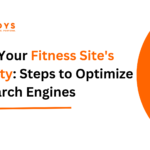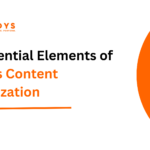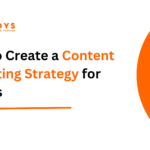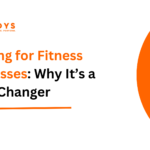Creating content for a fitness website can feel like preparing for a big workout—you need the right plan, tools, and motivation to get it done. But unlike that 5K run or lifting session, content optimization isn’t something you can just power through without strategy. In the crowded world of fitness, having great content is only half the battle; the real game-changer is ensuring people can find, read, and engage with it.
Optimizing your fitness website’s content isn’t just about boosting your rankings on Google (though that’s definitely a perk). It’s about giving your audience what they need—whether that’s workout tips, nutrition guides, or motivational stories—in a way that’s easy to find, fun to read, and, most importantly, useful. And let’s face it, the road to building effective content can be a little tricky. But here’s the exciting part: once you get it right, the payoff is huge. You’re not just reaching readers—you’re building a fitness community that keeps coming back for more.
1. Start with Keyword Research
Before you jump into writing your fitness content, take a moment to focus on keyword research—because without the right keywords, your amazing advice might just get lost in the crowd. Think of keywords as the foundation of your content optimization strategy. They’re what help search engines connect your site to people actively searching for fitness tips, workout routines, or nutrition advice. In the fitness industry, where trends change quickly, staying on top of relevant keywords ensures you’re keeping up with what your audience is looking for.
Using tools like Ahrefs or Google Keyword Planner can help you identify keywords that strike the right balance between search volume and competition. The goal is to find those sweet spot keywords—ones that are specific enough to attract the right readers but broad enough to still rank well in search engines. For example, instead of simply targeting “workouts,” you might go for “HIIT workouts for beginners” or “strength training at home.”
Action Tip:
Make sure your keywords feel natural within your content. No one likes reading something that’s clearly stuffed with awkward phrases for the sake of SEO. Use specific, naturally flowing keywords that feel relevant to your audience, like “best home workout routines” or “low-carb diet for fitness enthusiasts.” If it sounds like something a real person would say, you’re on the right track!
2. Create Valuable, Actionable Content
When it comes to fitness content, your readers aren’t just looking for inspiration—they want real, actionable advice they can apply to their routines. Whether it’s a new workout program, tips on healthy eating, or injury recovery methods, your content should provide clear and easy-to-follow steps. If you can help someone finally nail that perfect squat or stick to their meal prep plan, you’ve done your job.
The key here is to simplify. Fitness can be overwhelming for beginners or even for seasoned gym-goers looking to switch things up. Avoid jargon-heavy explanations or overly complicated instructions. Instead, break down exercises, routines, or nutrition advice into bite-sized steps that make it easy for anyone to follow along. Give them specific actions they can take—because at the end of the day, people love content they can use. A good step-by-step guide or routine can be the difference between someone bookmarking your site or bouncing off to the next one.
Action Tip:
To make your content even more digestible, try using numbered lists, bullet points, or even video demos. These elements can break up the text and make your advice easier to follow. For example, a workout plan can be presented with numbered steps and video clips showing each exercise in action. Visual aids not only help readers understand but also keep them engaged longer.
3. Optimize for Mobile
Let’s be real—most of us are glued to our phones, whether we’re searching for a new workout or scrolling through fitness tips on Instagram. That’s why optimizing your fitness website for mobile is non-negotiable. With the majority of web traffic coming from mobile devices, Google’s ranking algorithm now prioritizes mobile-friendly websites. So, if your content looks great on a desktop but is a nightmare on a smartphone, you’re not just frustrating your readers—you’re losing rankings, too.
Your fitness content should be as easy to read and navigate on a phone as it is on a computer. This means ensuring that text, images, and videos are responsive, load quickly, and adjust seamlessly to different screen sizes. Whether someone is looking up your site during a workout session or while grocery shopping for healthy meals, your site needs to perform effortlessly.
Action Tip:
Don’t just assume your site works well on mobile—test it! Use Google’s mobile-friendly test tool to identify any issues and ensure smooth mobile performance. If your site loads quickly, is easy to navigate, and looks clean on smaller screens, you’re already ahead of the game.
4. Incorporate Visual Content
In the fitness industry, visual content is a game-changer. Whether it’s demonstrating the proper form for an exercise or showcasing a healthy meal, images, videos, and infographics help break down complex ideas and make them more digestible for your audience. Let’s be honest—most people would rather watch a quick video of a workout routine than read through paragraphs of instructions. Visual content grabs attention, increases engagement, and makes your message stick.
Beyond aesthetics, visual aids provide clarity. A well-placed image or video demo can clear up any confusion and ensure that your readers are following your advice correctly. It’s especially crucial in fitness where form and technique are key. A picture (or video) can indeed be worth a thousand words when it comes to explaining how to safely perform a deadlift or prepare a post-workout smoothie.
Action Tip:
Use high-quality visuals that are optimized for fast loading. Large, high-res images or videos can slow your site down, frustrating users and hurting your SEO ranking. Tools like TinyPNG can help compress images, and platforms like YouTube or Vimeo can be used to host videos. Make sure your visuals are clear, relevant, and don’t impact your site’s performance.
5. Write Compelling Meta Descriptions and Titles
Your meta descriptions and titles might be short, but they pack a powerful punch when it comes to SEO and click-through rates (CTR). These tiny snippets of text are the first thing people see on search engine results pages (SERPs), so they need to grab attention fast. A compelling title can make the difference between someone clicking on your fitness blog or scrolling past it.
Think of your meta description as your elevator pitch—make it engaging and descriptive enough to spark curiosity. You want to clearly convey what the content is about while giving readers a reason to click. But remember, you’ve only got about 160 characters to work with, so be concise, yet compelling.
Action Tip:
Use action verbs like “Discover,” “Learn,” or “Unlock” to make your meta descriptions more appealing and motivate users to take action. For example, instead of saying “Tips for better workouts,” you might write “Discover expert tips to transform your workouts today.” This not only sounds more engaging but also gives a sense of urgency. Plus, don’t forget to include your focus keyword to improve SEO without making it feel forced!
6. Utilize Internal Linking
When you’re creating fitness content, internal linking is like a friendly guide showing your readers around your website. It not only improves user experience but also plays a crucial role in enhancing your SEO. By linking related blog posts or fitness resources, you keep readers engaged and encourage them to explore more of your site.
Imagine you just read a fantastic post about strength training for beginners. If there’s a link to another article on nutrition for muscle gain or a detailed guide on proper lifting techniques, it invites readers to dive deeper into your content. This not only keeps them on your site longer but also helps them find valuable information that they might not have otherwise discovered.
Action Tip:
When writing your content, look for natural opportunities to link to related posts. For instance, if you mention a specific workout or nutrition tip, consider linking to an article that goes more in-depth on that topic. This strategy encourages users to explore more of your site, which can reduce bounce rates and signal to search engines that your content is relevant and valuable. Plus, it makes your site feel like a comprehensive resource, which can establish your authority in the fitness niche.
7. Keep It Conversational
Let’s face it: the fitness world can sometimes feel intimidating, especially for beginners. That’s why your fitness content should be as friendly and approachable as a gym buddy who’s always there to encourage you. Keeping a conversational tone helps break down barriers and makes your readers feel more comfortable as they navigate their fitness journeys.
Using humor and relatable language can go a long way in creating a connection with your audience. Maybe you crack a joke about how the treadmill always seems to be the “enemy” or share a funny personal story about a workout gone wrong. These little touches help humanize your content, making it feel less like a lecture and more like a chat with a friend who just wants to see you succeed.
Action Tip:
Don’t be afraid to ask questions throughout your content. Phrases like “Have you ever tried this workout?” or “What’s your go-to post-workout snack?” encourage your readers to engage with you and share their experiences. Keeping the tone light and conversational not only fosters a sense of community but also makes your content more enjoyable to read. Remember, the goal is to inspire and motivate, not to preach!
8. Regularly Update Content
Let’s be real: the fitness industry is always evolving. What was considered cutting-edge advice last year might already feel outdated. That’s why it’s crucial to regularly update your content to keep it relevant and useful for your readers. Whether it’s the latest workout trends, nutritional insights, or even new research on exercise techniques, your audience will appreciate content that reflects the most current information.
Updating older posts not only keeps your site fresh but also helps boost your SEO. Search engines love content that is regularly maintained and reflects the latest trends and insights. When you revise older articles with new information, you not only enhance their value but also signal to Google that your site is an authoritative resource in the fitness space.
Action Tip:
Take some time to revise older content by adding current fitness trends or new insights. For example, if you wrote an article about “The Benefits of High-Intensity Interval Training” two years ago, see if there are new studies or trends that you can incorporate. Not only does this improve the quality of your content, but it also shows your readers that you’re dedicated to providing them with the best and most accurate information. Plus, who doesn’t love a good refresh? It’s like giving your old workout gear a stylish makeover!
9. Encourage Reader Interaction
Creating great content is just the beginning. To truly connect with your audience, you need to encourage reader interaction. This is where the magic happens—when your readers feel like they’re part of a community rather than just passive consumers of information. Encouraging comments and participation not only boosts engagement but also builds a loyal following that keeps coming back for more.
Think of your blog as a fitness group where everyone shares tips, experiences, and support. By inviting readers to share their thoughts and experiences, you foster a sense of belonging and connection. Whether they’re sharing their own workout victories or asking questions about your latest post, their participation enriches the conversation and enhances the overall experience for everyone.
Action Tip:
At the end of your posts, pose questions to prompt comments and interaction. Ask your readers about their favorite workouts, challenges they’ve faced, or tips they’d recommend to others. For example, you might say, “What’s one fitness goal you’re currently working on?” or “Have you ever tried this recipe? Share your experience!” These open-ended questions encourage readers to engage with your content and each other, creating a lively community atmosphere on your site. Plus, the more interaction you have, the better for your site’s SEO and visibility!
10. Use Analytics to Track Performance
If you’re not using analytics to measure the effectiveness of your content, you’re missing out on some serious insights! Analytics are essential for understanding how your audience interacts with your fitness website. By keeping an eye on site traffic, bounce rates, and content performance, you can identify what’s working and what needs a little tweaking.
Imagine posting a workout routine that you think is a winner, only to discover it’s not getting the traction you expected. That’s where analytics come in! They give you the data you need to adjust your strategy, whether that means changing your headlines, tweaking your call-to-action, or even exploring new topics that resonate more with your audience.
Action Tip:
Make it a habit to use tools like Google Analytics to track and optimize performance regularly. Check metrics like page views, average session duration, and bounce rates to get a sense of your content’s performance. If you notice that certain types of posts are driving more engagement, consider creating more content around those themes. Conversely, if something’s not resonating, don’t be afraid to revise or retire it. Remember, data is your friend—it helps you refine your approach and provide content that truly meets the needs of your readers!
Conclusion
Optimizing your content is essential for attracting and retaining an engaged audience. Let’s recap the 10 essential elements of fitness content optimization that can elevate your website:
- Start with Keyword Research: Identify relevant keywords to enhance your SEO.
- Create Valuable, Actionable Content: Offer clear and practical advice for your readers.
- Optimize for Mobile: Ensure your site is mobile-friendly for a seamless user experience.
- Incorporate Visual Content: Use images, videos, and infographics to boost engagement.
- Write Compelling Meta Descriptions and Titles: Craft engaging titles that encourage clicks.
- Utilize Internal Linking: Link-related content to keep readers exploring your site.
- Keep It Conversational: Adopt a friendly tone that makes your content approachable.
- Regularly Update Content: Refresh older posts with new insights and trends.
- Encourage Reader Interaction: Foster a sense of community by prompting comments.
- Use Analytics to Track Performance: Monitor metrics to continually optimize your content strategy.
Now is the perfect time to audit your site and see where you can make improvements. Whether it’s refining your keyword strategy or enhancing user engagement, small changes can lead to significant results.
Have questions about content optimization strategies? Or perhaps you have tips of your own? Feel free to drop a comment below—I’d love to hear your thoughts and engage in a conversation about making our fitness content even better!





